I was a little undecided between going to Dawki or making a long trip to Tura. And my Airbnb host in Shillong had almost decided to convince me to head to Dawki. He got his phone and scrolled down to show me pictures of Dawki. An established photographer himself, he didn’t have to put much effort to convince me. ‘But after you have taken a boat ride in the Unmgot river, head to Shnongpdeng. You are going to love that place,’ he said convincingly. I think it took more of his smile than words to convince me to head to Dawki.
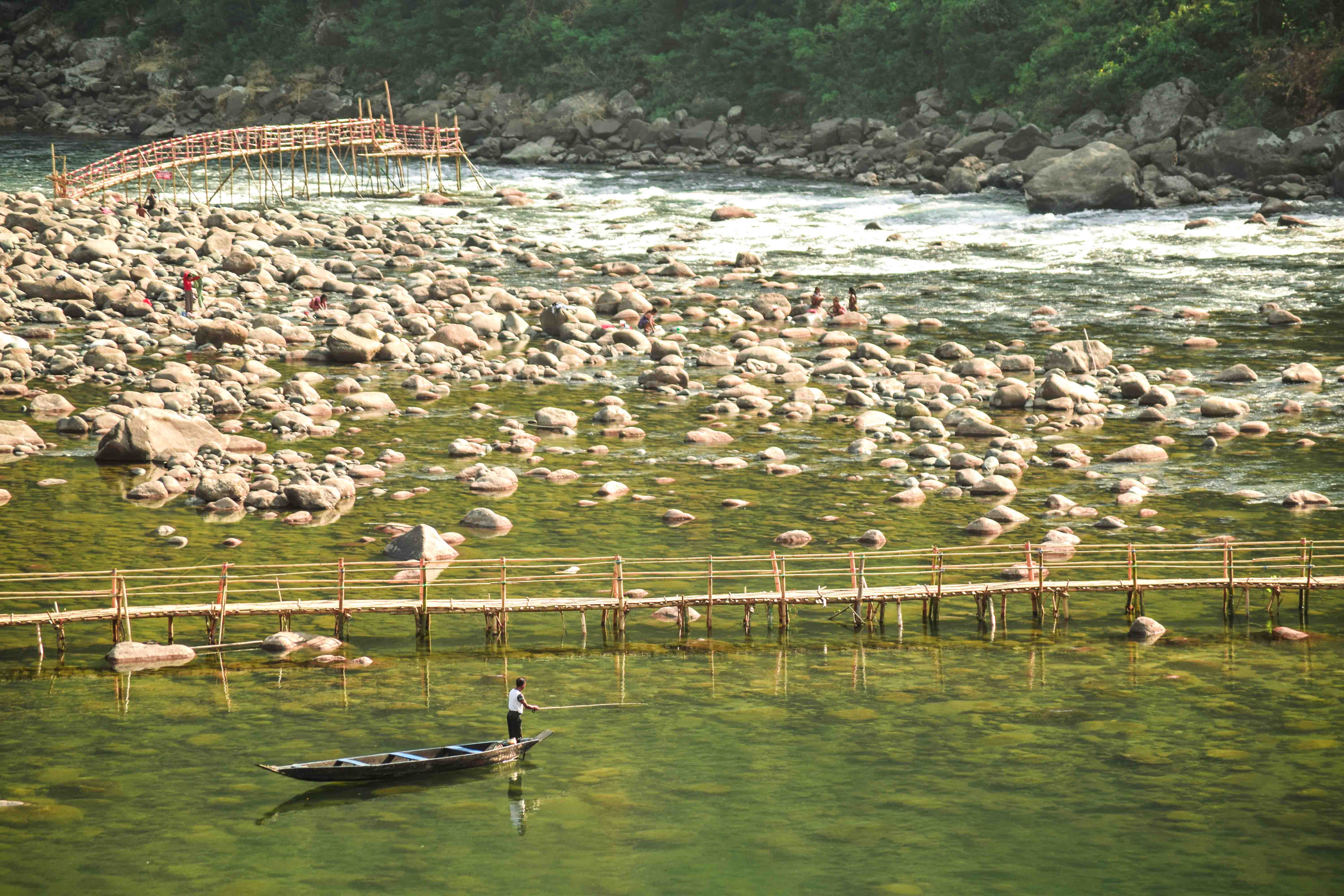
The path from the highway to the river was lined with delicate bamboo shacks-on-stilts, tempting travelers with the aroma of red tea, a local favorite. It took almost an hour to reach Dawki from Shillong. Dawki happens to be a border town and sees a lot of cross-border trade between India and Bangladesh. My first impression of Dwaki was of a little, bustling town, with traders, travelers, and the locals alike. I learned that it is possible to go on hour-long rides in a boat for less than 500 Rupees and the cost is even lesser if there are other people to share it with.
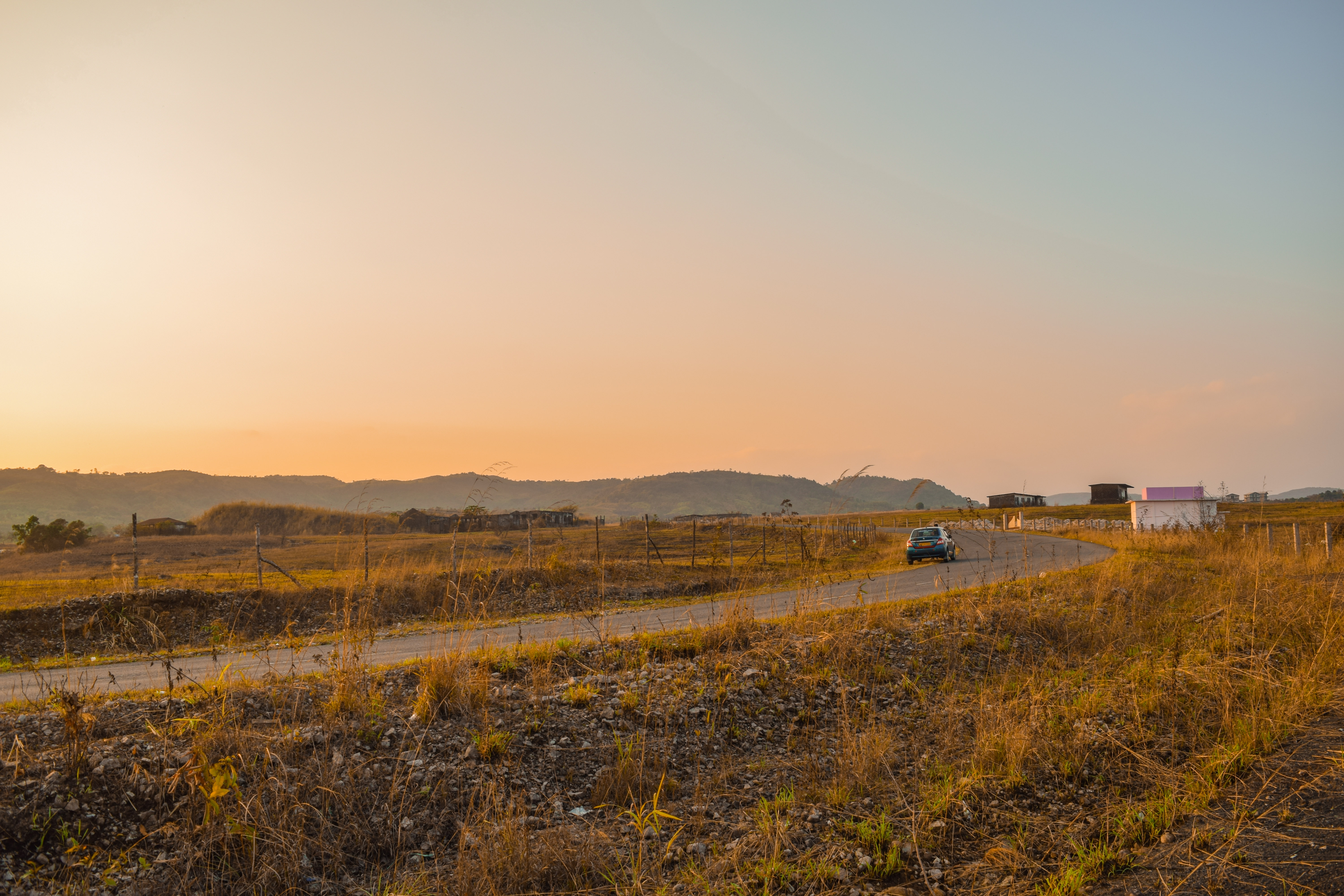
The Unmgot river was as I had seen in many pics. The water was crystal clear, revealing a rocky riverbed that only appeared shallow. The color of the water was so clear that the boats appeared to float. It was an inexplicable sight. The last stretch of the road had even more beautiful views of the Umngot river. The boat stopped at a small island where one can savor some snacks or take a stroll on the sand. I decided to lay still catching on to the indescribable journey I had taken. The pictures don’t do justice to the place, for they capture only one aspect of Dawki – the part that is well marketed. Those pictures fail to capture the elegance and resoluteness of the hills that surround it, or the silence that stays with you on the boat ride, the pictures of young kids who set their anglers to catch fish, or the feel of the boat paddles that take you out of the hustle of a border town to such mystifying tranquility in minutes. The pictures can’t do that, that can only be experienced and lived.
I stayed there for some time with thoughts bubbling in my mind. You can also set up a camp on the island. I was enthralled at the thought of that. The silence of the night, flickering fireflies, millions of stars above keeping a guard on you, the softness of the river, the chill in the night wind, a fireplace set, and umpteen moments to live. It seemed the time had stood still and I was wrapped in some dream, before the boatman shouted for us to return, and brought me back to reality. It is in places like these that one realizes that you can put any price tag on silence, and it always seems worth that.
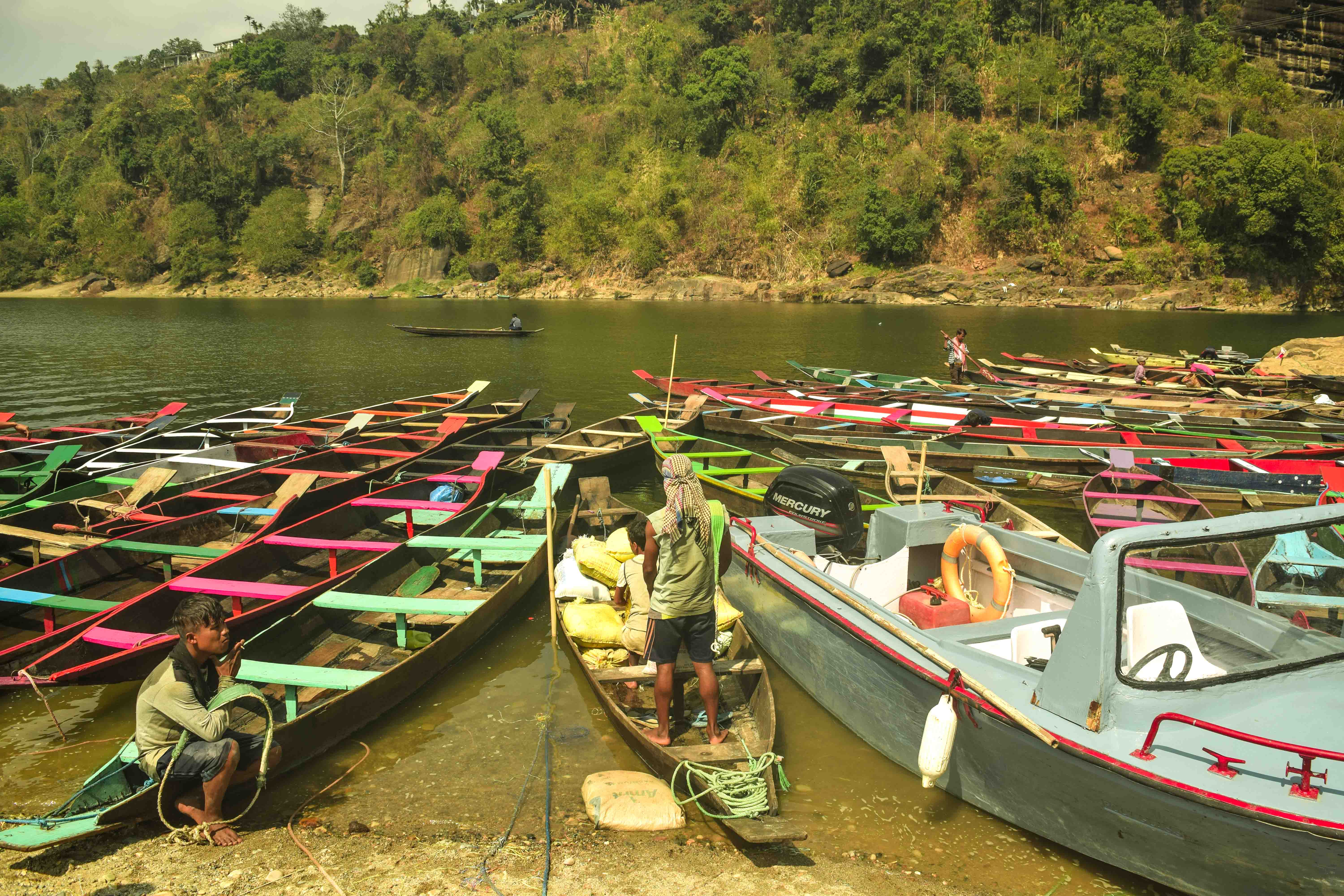

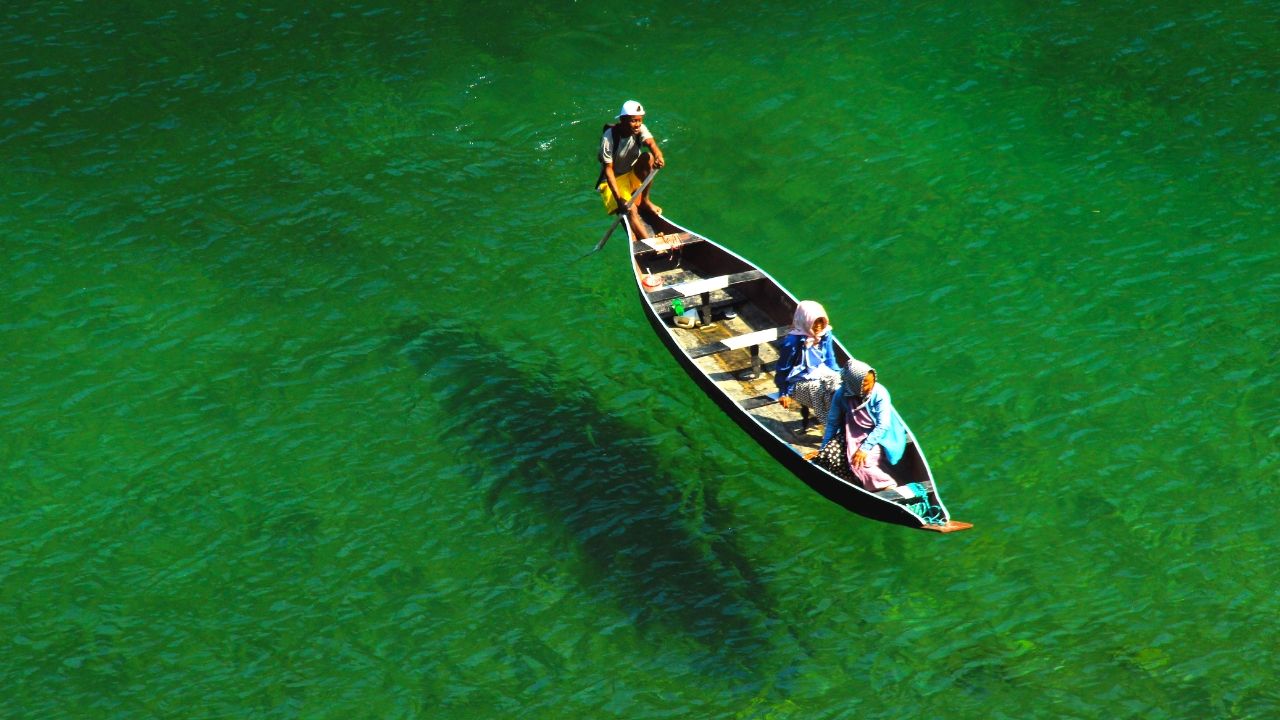
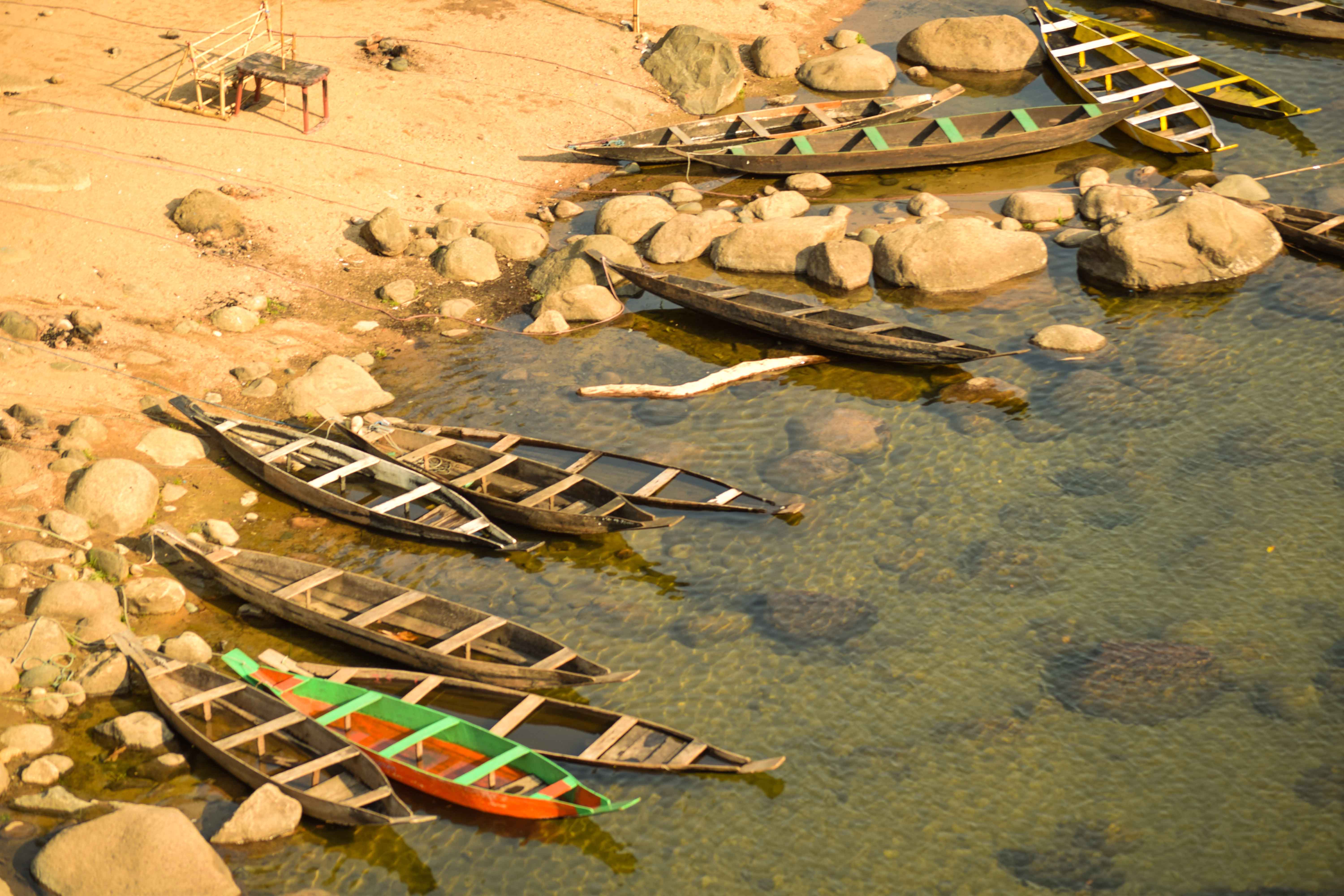
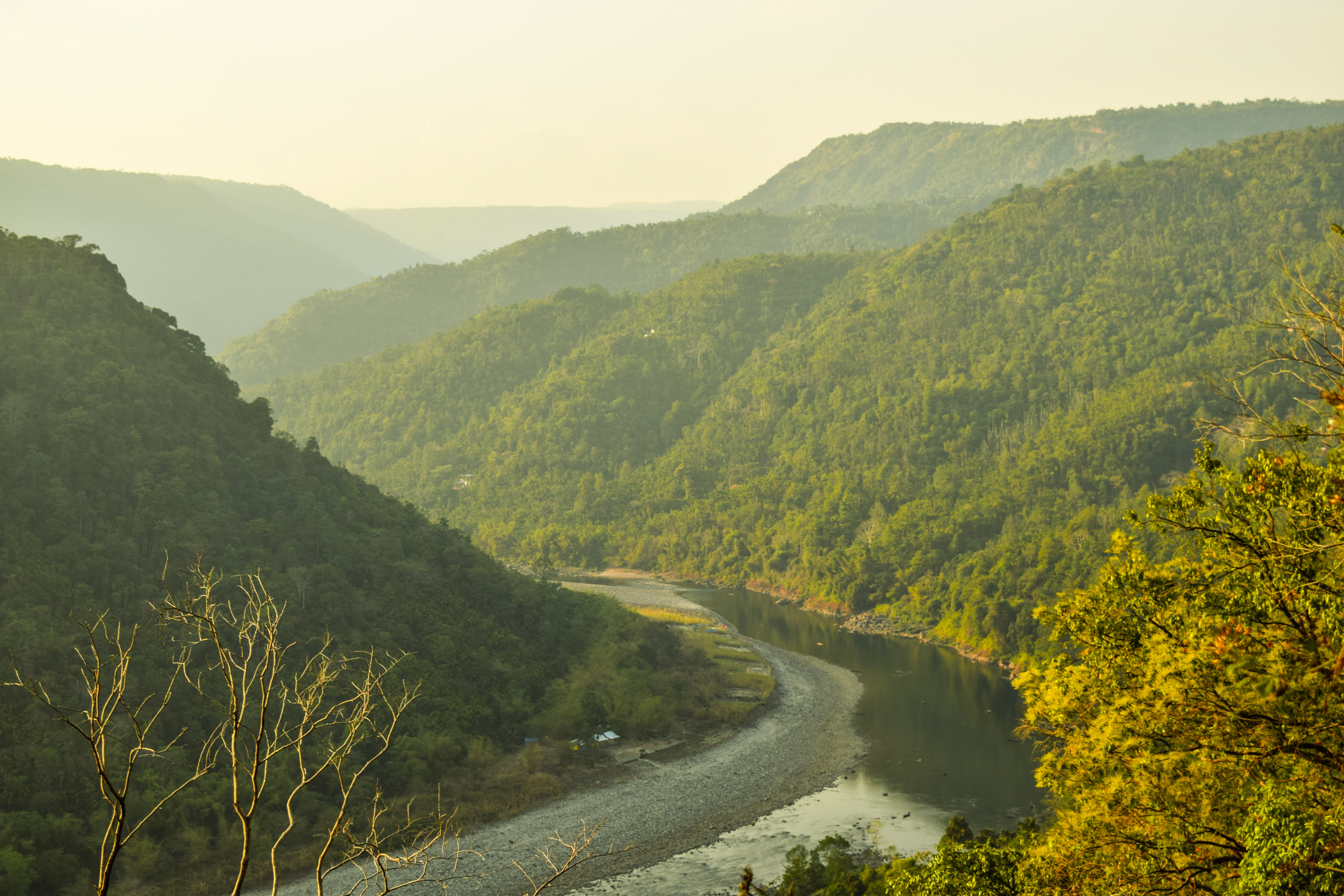
Soon I was back to where I had begun from. I remembered my host’s words about going to Shnongpdeng. A quick, simple lunch at a basic eatery, and off I went on another short journey of 8 kilometers. I was tempted at the sight of the river there. It was clearer, and the surroundings much quieter. But Shnongpdeng is not just for the views. A small stretch on the western riverbank is the operational base for Pioneer Adventure Tours, who also have a campsite of their own. These people can open the world of adventure for you at the river site. I was ready upon their instruction to the diver in the river, but the manager Adrian stopped me and asked me to start with a sedate spell of kayaking. I was consciously not tiring myself out. Save for a tiny current, the water was still, as were the anglers vying for a basket of fish that sunny afternoon. The abundance of fish, coupled with very clear water, is exactly why this section of the river is a great spot for scuba diving.


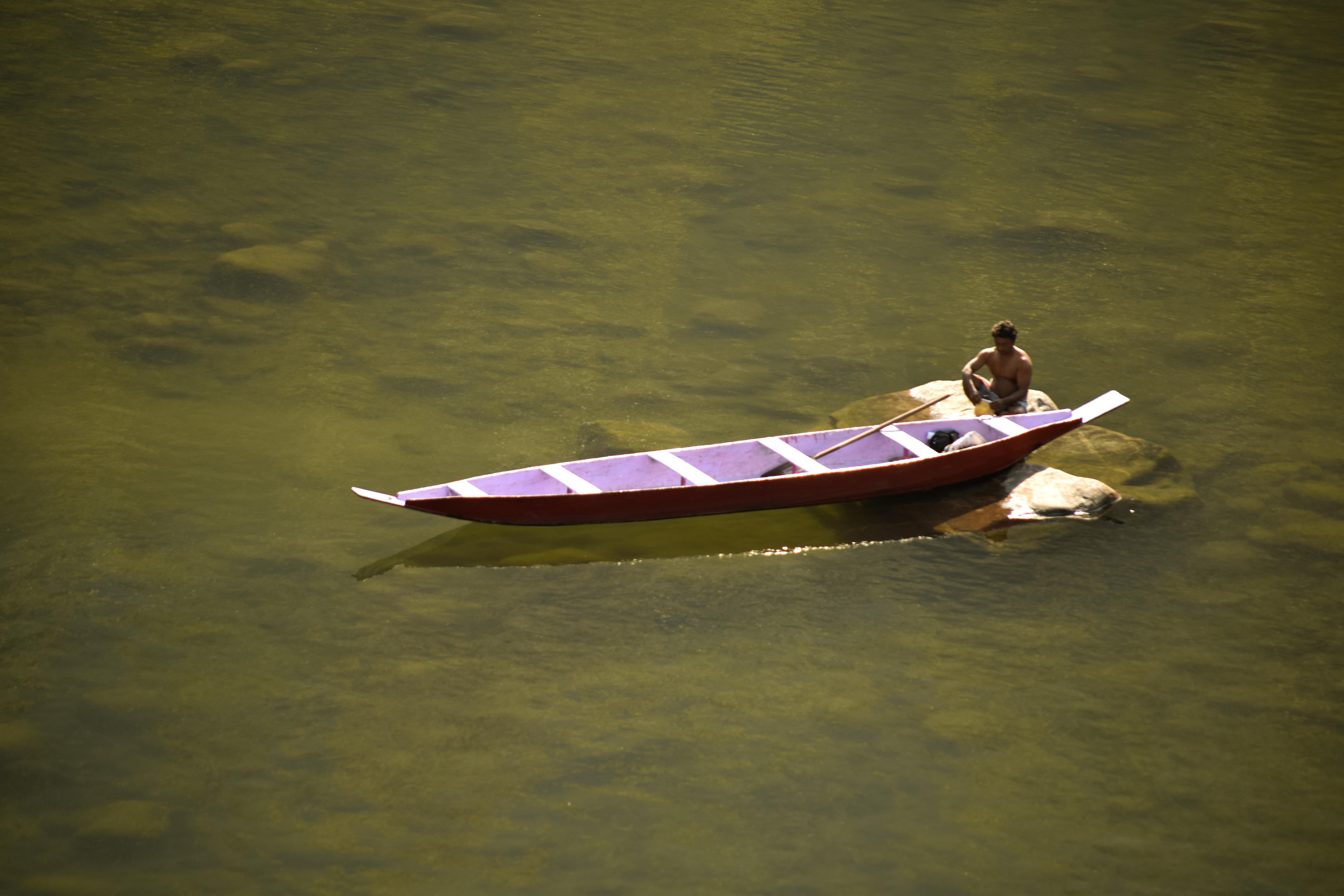
Adrian told me that experienced divers can go up to forty feet deep, the depths at which massive catfish weighing up to fifty kgs and tiger mahseers can be spotted. Since I was a first-timer, I was only allowed to go up to twenty-five feet deep. I could feel the temperature go down as we descended down, all insulated in scuba diving suits. Even at those depths, I spotted some massive catfish and mahseer. They were not gargantuan but beautiful and swift. Adrian held my hand to gravitate toward the large algae-laden boulders, seeming like the dense foliage of the microflora. More than the views the most significant part of the dive was experiencing life underwater.
In what seemed like no time, we were back up, and the disappointment was evident on my face. Adrian suggested trying other adventure activities, and there was a huge bunch of those to pick from – cliff jumping, zip-lining, to hiking. I chose to opt-out and rather go around to feel the vibe of the place. The suspension bridge running across the river soon became my ‘to-be’ place. The view from the bridge was enthralling. The fulling vastness of the place, and every activity seemed like drips in this place. And though I did not jump I climbed up the precipice to see the height from which people jump. The look and thought of those boulders which I had seen while diving in, scared me. Adrian told me that there are three levels of jumps at varying heights of six, 15, and 22 feet. And though he asked again I couldn’t muster the courage to take a leap.

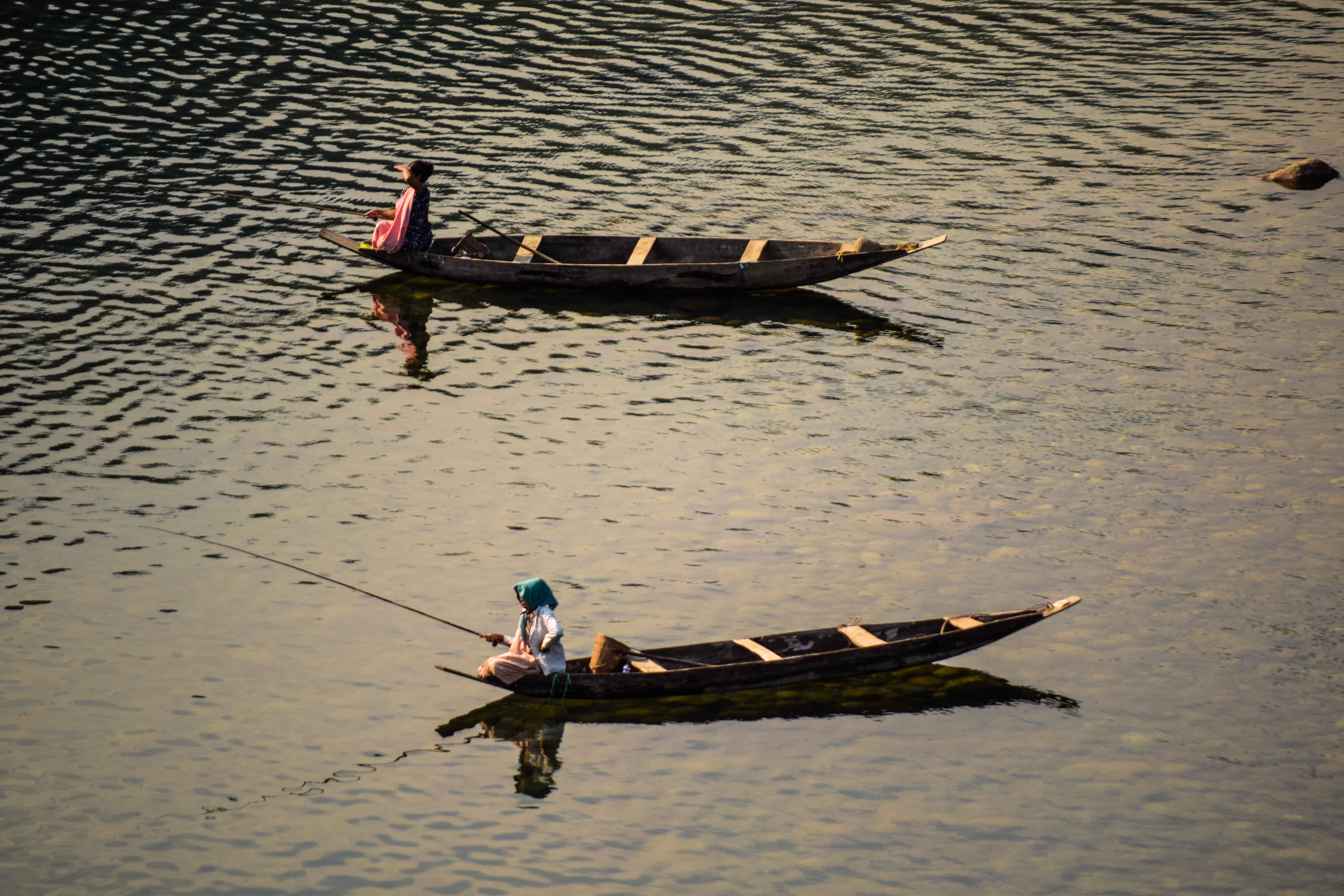
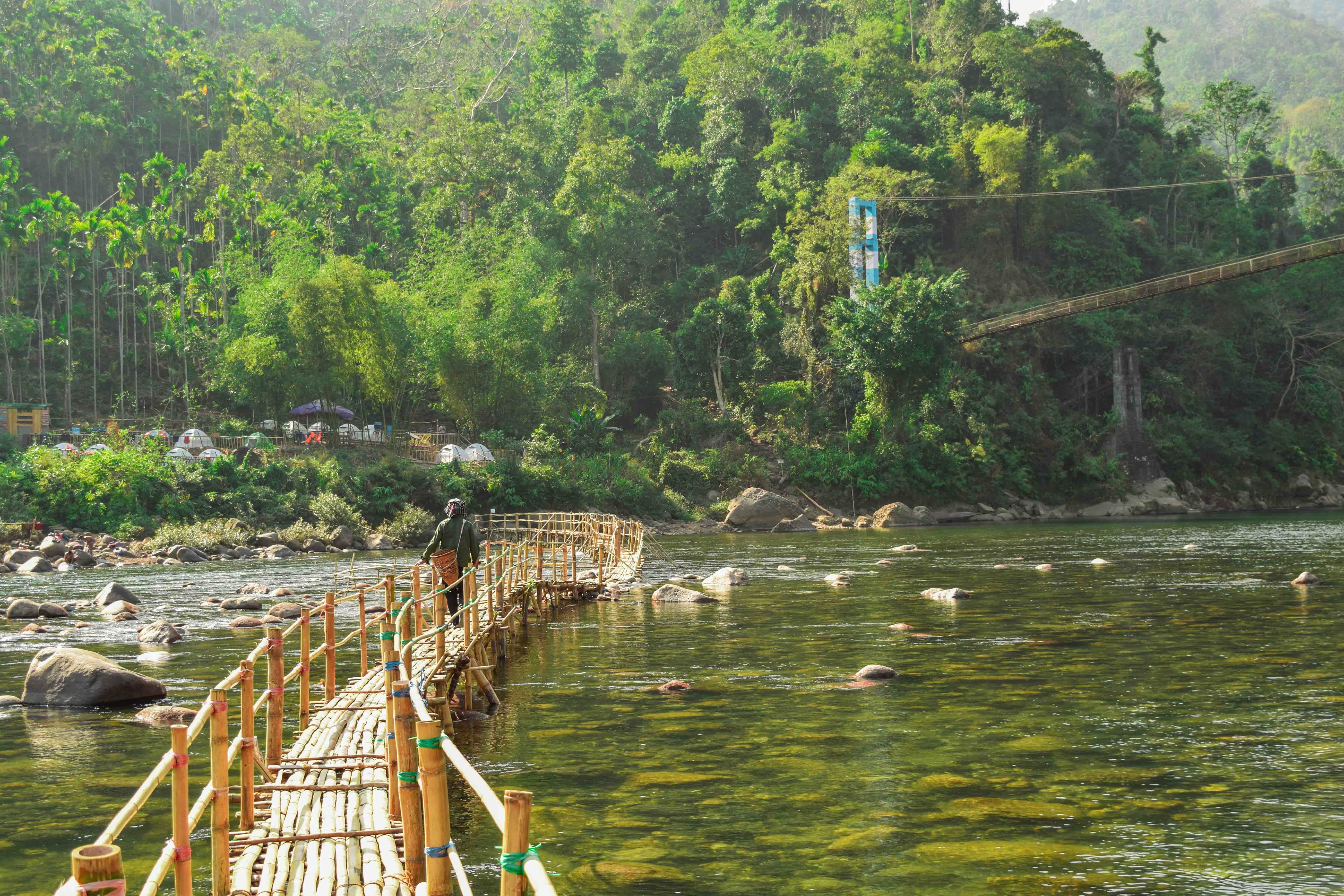
Guessing my reluctance, Adrian called me down to try some pork fry and red tea. And good food is exactly my type of thing. Over the next hour, we talked about how adventure tourism has grown in Meghalaya and its impact on the local livelihood. He seemed quite upbeat about it, and that people are coming from far to try new adventures in Meghalaya. And for me, I was pleased with the discovery I had made. An experience that I had lived only in pictures and Instagram pages were well lived in reality.


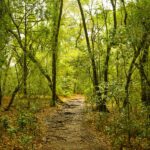
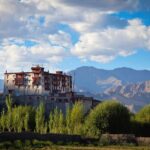




Stunning pictures of boat with clear water is enough to convince anyone to travel to Dawki
Ohh definitely – that inspired me too. But the thought of adventure sports is more enticing I feel